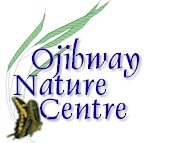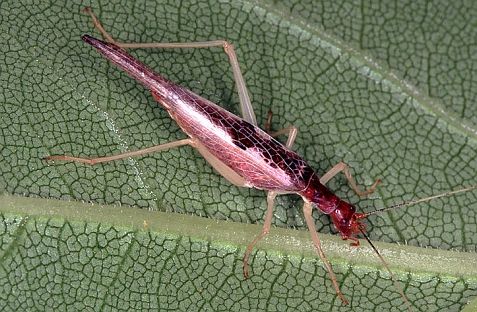
LINKS
Main Menu
Back to Latest Sightings
PAST MONTHS
2005
July
May Jun
Mar Apr
Jan Feb
2004
Nov Dec
Sept Oct
July Aug
Jun May
Apr March
Feb Jan
2003
Dec Nov
Oct Sept
Aug July
Jun May
Apr March
Feb Jan
2002
Dec Nov
Oct Sept
Aug July
Jun May
Apr March
Feb Jan
2001
Dec Nov
Oct Sept
Aug July
Jun May
Apr March
Feb Jan
2000
Dec Nov
Oct Sept
Aug July
Jun May
Apr March
Feb Jan
1999
Dec Nov
Oct Sept
Aug July
Jun May
Apr March
Feb Jan
1998
Jan-Dec
1997
Nov-Dec
August 2005 Sightings in the Windsor Area

![]()
Visit the Nature Centre's Upcoming Events page and ECFNC Activities page for upcoming programs.
Wednesday, August 24: Our field trip to Holiday Beach C.A. this morning produced 77 bird species. The Red-headed Woodpecker family and Eastern Screech-Owl were seen again this week. Hundreds of warblers were moving through the park with Chestnut-sided and Magnolia Warblers being the most common. At the hawk tower we were able to look down and watch warblers feeding in the cottonwoods and willows at the edge of the marsh. Flycatchers were numerous as well with great views of Olive-sided Flycatcher, Yellow-bellied Flycatcher, Least Flycatcher, Great-crested Flycatcher, Eastern Wood-Pewee and Eastern Kingbird. Other highlights included an American Woodcock sitting beside the trail and good scope views of Green Herons and a Black-billed Cuckoo. A few juvenile plumaged Norther Harriers spent the morning hunting low over the marsh.
Wednesday, August 17: We had a beautiful day for the first outing of the fall migration to Holiday Beach Conservation Area. The Big Creek marsh is covered by thousands of flowering American Lotus plants. Water is being pumped back into the marsh and very little exposed mud is available for shorebirds. We did see a few sandpipers with Lesser Yellowlegs being the most common species.
At the hawk tower we watched a Bald Eagle flush hundreds of ducks from the marsh while large numbers of migrating swallows and Chimney Swifts flew past. A walk along the wooded edge of the picnic area revealed a nice mix of migrant warblers including Tennessee, Yellow, Cape May, Blackburnian (most common), Bay-breasted, Pine, Black-and-White and Canada. We watched several warblers take a bath in a small puddle.
The nesting season has ended for most birds but we did see an adult Red-headed Woodpecker plucking Silky Dogwood berries and feeding them to a juvenile bird. An Eastern Screech-Owl revealed itself to the group by responding to my whistled owl call. We had a frame filling view of the bird through the spotting scope. About 70 species were recorded on the trip.
The warm dry summer has had a variety of impacts. Mosquito populations are relatively low because there is little standing water. The showy trumpet creeper vines are developing seed pods this year which we have rarely seen in past years.
Monday, August 15: Two Sedge Wrens have been singing in the prairie since August 2. other birds are starting to move south. This week large flocks of American Robins and groups of Baltimore Orioles have been moving through the area. Five migrant Common Nighthawks were seen flying over the prairie on August 7.
Tuesday, August 9: Bird song is decreasing as we reach the end of the breeding season. Indigo Buntings and Goldfinches are the most common singers in August. But birds aren't the only noted singers at Ojibway. This is the peak time for insect song. During the day cicadas produce their loud whiny songs while field crickets Gryllus sp. and ground crickets Allonemobius sp. provide a constant background noise. Tree crickets, conehead katydids, bush katydids and true katydids produce a rich variety of song on warm nights.
Thanks to the effort of many volunteers the breeding bird atlas project has reached its targets for the 36 atlas squares in the Essex Region. Over 2,400 volunteer hours have produced 11,000 breeding evidence and point count records for the atlas. Species maps can be viewed on-line at the atlas web site, wwww.birdsontario.org.
